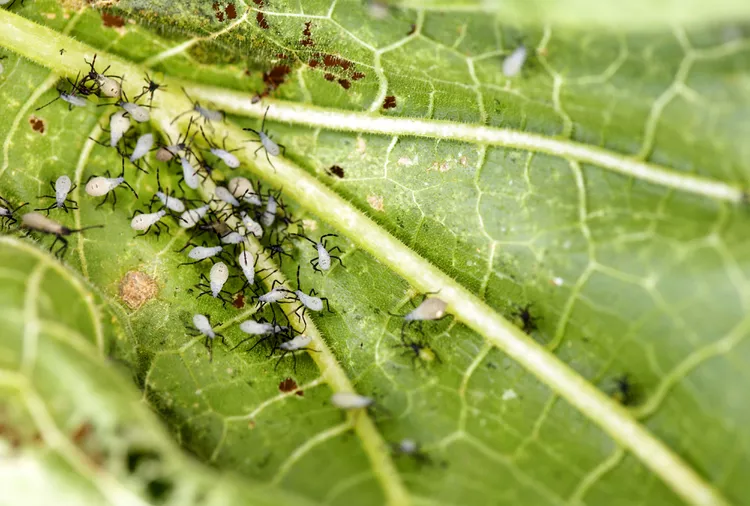Squash bugs (Anasa tristis) are notorious pests that target cucurbit vegetables such as summer and winter squash, pumpkins, melons, gourds, zucchini, and cucumbers. These pests are challenging to control as they overwinter in plant debris and reemerge seasonally to cause damage in gardens. However, with effective organic methods and careful management, you can prevent and eliminate squash bugs effectively.
Identifying Squash Bugs
Appearance: Adult squash bugs are approximately ½ inch long with flat, gray-to-brown bodies shaped like a cello instrument. They have gently flaring sides adorned with small orange stripes. While capable of flight, squash bugs typically move between plant leaves and stems using their slender, black legs. They are most active during warm summer months.
Eggs: Squash bug eggs are reddish-brown and oval-shaped, usually found in clusters on the undersides of plant leaves. These eggs hatch into nymphs in about 10 days.
Nymphs: Squash bug nymphs also gather on leaf undersides. They have teardrop-shaped bodies that may appear spiky.
Squash Bug Look-a-Likes
Before addressing a squash bug issue, it’s essential to distinguish them from similar insects:
- Stink bugs: These insects have wider, shield-shaped bodies compared to squash bugs, and while they damage plants, they are distinct from squash bugs.
- Squash vine borers: Moths with orange bodies and black wings that target cucurbit crops, unlike squash bugs.
- Assassin bugs: These beneficial insects resemble squash bugs but are solitary and beneficial for gardens as they prey on pests, including squash bugs.
Signs of a Squash Bug Infestation
Look for these indications to identify a squash bug problem in your garden:
- Feeding Clusters: Squash bugs feed in groups around plant crowns, stems, and under leaves.
-
Yellow Stippling: Their saliva is toxic to plants, causing yellow spots on leaves where they feed.
-
Wilted Leaves: Continued feeding leads to brown, wilted, or crispy leaves, which can eventually drop off.
-
Plant Damage: Young plants may die from heavy infestations, while established plants may exhibit stunted growth or damaged fruit.
Managing Squash Bugs
To control squash bugs effectively:
- Monitoring: Regularly inspect plants, particularly the undersides of leaves, for eggs, nymphs, and adults.
-
Physical Removal: Handpick squash bugs and their eggs, dropping them into soapy water to prevent further infestation.
-
Natural Predators: Encourage beneficial insects like assassin bugs that prey on squash bugs.
-
Organic Sprays: Use organic insecticidal soaps or neem oil to deter and kill squash bugs, applied directly to affected plants.
By implementing these strategies and staying vigilant, you can effectively manage squash bug populations in your garden, preserving the health and productivity of your cucurbit crops

